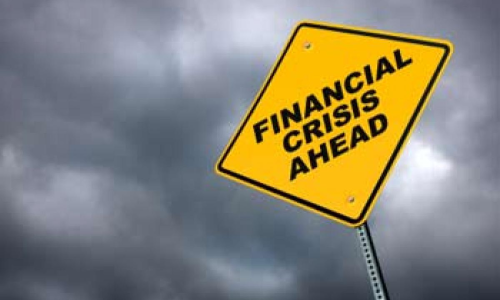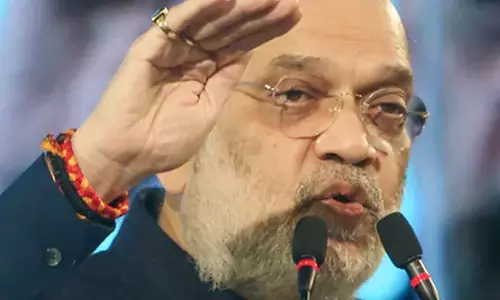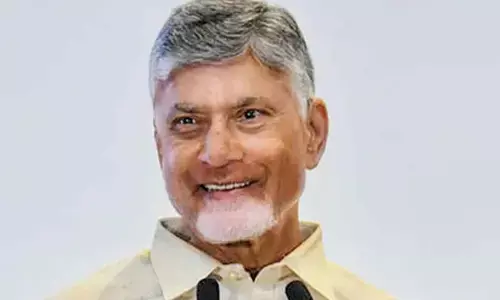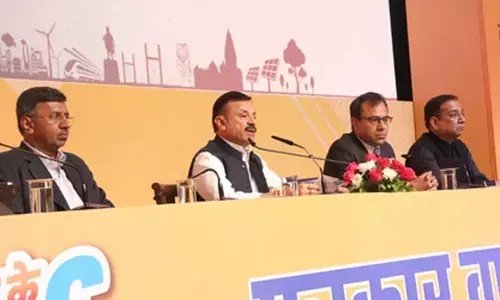Dark clouds gathering over the economy

The Indian economy faces a rare double whammy of shrinking prices for producers and rising prices for consumers.
The Indian economy faces a rare double whammy of shrinking prices for producers and rising prices for consumers. Raghuram Rajan recently said India is importing global deflation in commodities, reflecting in shrinking prices for producers. Consumer prices, mostly reflecting what people pay for food items, are rising because of massive supply constraints caused by a bad agriculture year.
So both businesses and farmers are facing an earnings crunch and the aam aadmi is experiencing higher food prices. This condition seems to be worsening as the latest data on industrial production for the month of November shows a contraction of 3.2% in industrial output. Worse still, the capital goods sector – which reflects new investments – has shown a negative growth of 24%.
And this is happening over a relatively small base of 2014, when things were not much better. The industrial production numbers clearly reflect a continuing sluggishness in demand, especially rural demand which is affected by farm distress all around. No wonder the consumer goods sector is showing a negative growth of – 0.5% for the period April-November.
Prime Minister Narendra Modi had largely remained insensitive to the acute farm crises across the country. Belatedly, the NDA government has announced a crop insurance scheme for farmers, the Pradhan Mantri Kisan Bima Yojna. The government is also trying to strengthen the Mahatma Gandhi National Rural Employment Guarantee Scheme to help rural farm labour tide over the present crisis.
One recalls Modi’s supercilious statement in Parliament that the very existence of a rural employment guarantee scheme is a symbol of Congress’s economic policy failures. As farm distress deepens, and rural demand shrinks, the NDA finds itself forced to follow in the UPA’s footsteps. Unfortunately, the NDA’s economic management is marked, first and foremost, by a sense of denial that anything is wrong with the economy.
One routinely hears BJP spokespersons on TV channels saying India’s economy is shining compared to others in the world. In actual fact, India is very much part of the deepening global deflationary trend these past few months. The reputed global economy watcher George Soros has said the world could be close to facing a 2008-type recession.
Soros attributes the origin of a fresh recession to China readjusting its economic model. Moreover, a full US economy recovery looks uncertain, Japan is in recession and Europe continues to be a drag. Adding to this gloomy picture, many emerging economies are also facing a combination of recession and severe slowdown as in the case of China.
Against this backdrop, our policy makers appear to be living in a make-believe world that India is a “lone shining star.” This is far from the truth. It is true global investors were differentiating India from other emerging economies like Brazil, Russia, Indonesia etc until the middle of 2015. But that differentiation is getting blurred now as the perception is India hasn’t taken advantage of its improved fundamentals to push many policy reforms.
The investing community perceives that the NDA has lost a window of 15 months since it came to power. This year will be even tougher as the Chinese economy is slipping further and is widely expected to gradually devalue its currency to stay afloat. An orderly Chinese devaluation over the next six months could cause severe damage to India’s competitiveness.
One doesn’t know whether the NDA government is studying China closely enough to figure what policy implications events in Beijing will have on India. The 2016-17 Union budget presentation, which is just a month away, cannot be a business-as-usual budget. There are many risks because the budget will necessarily have to anticipate what China might do over the next six months and accordingly devise strategies to shore up India’s economy.
Of course the global economy today has so many moving parts that it is impossible to take into account all the developments occurring simultaneously. India will have to be particularly mindful about getting caught between a gradual Chinese currency devaluation, eroding our competitiveness further, and a gradual rise in US interest rates – which would encourage a larger share of global capital to shift back to the US.
This is another double whammy India could face and the forthcoming Economic Survey would be the right document to outline the policy instruments India might use to stave off a combination of Chinese currency devaluation and a rise in the US interest rates. The Chinese devaluation is a huge risk for us also in terms of the impact it might have on the Indian banking system and the growing bad loans of big commodity companies which have gone bust because of the same goods arriving from China at less than half the price.
India’s banking system is under unprecedented strain as close to 20% of its total credit portfolio is being described as stressed in varying degrees. When the 2008 global recession started transmitting beyond America’s shores, India’s banking system was still a bright spot by and large. It is not the case this time. Consequently, India cannot claim much positive differentiation from many other emerging markets if another global recession were to occur today, which many experts are not ruling out. (Courtesy: http://thewire.in/)

















